I’ve been fortunate enough to train Muay Thai for more than a year in Thailand at several gyms on different trips.
And in this guide, I’ll share everything I know with you. Including things, I wish I knew from the beginning. Chances are some of it will surprise you. Including:
- Why training in Thailand is different and what to expect
- How to find the right gym and important things to look out for
- Everything you need to prepare and consider before going
- How to stay in Thailand for more than 90 days (if you want)
- What it will cost you and tricks to save a lot of money
- And much more…
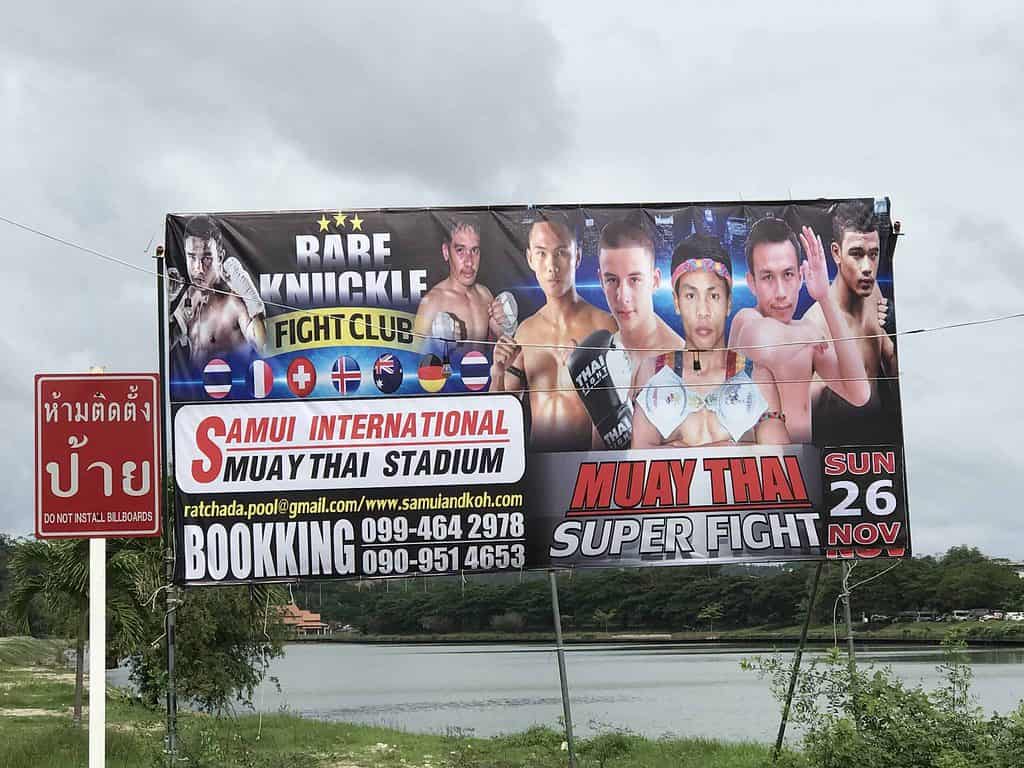
📖 Table of Contents
- If You’re a Muay Thai Beginner
- Why Training Muay Thai in Thailand Is Different
- How To Find the Right Muay Thai Gym in Thailand
- The Schedule of a Typical Training Session
- How To Find the Best Accommodation Near Any Gym
- What To Pack From Home
- How To Stay Safe and Take Care of Your Health
- What to Consider if You’re Serious About Training
- Whether You Should Prepare Yourself Physically or Not
- If You Want To Stay in Thailand for More Than 90 Days (And up to 1 Year)
- Next Chapter: How Much Does It Cost To Train Muay Thai in Thailand?
If You’re a Muay Thai Beginner
Before continuing let’s just hold for a second, because this is important.
If you consider yourself a beginner, I highly advise you to read my guide on Muay Thai training in Thailand for beginners before continuing. And don’t worry, the information there is unique and won’t be repeated here for you to read twice.
But if you’ve already been training for a while, have your gear, and know your way around Muay Thai, then you’ll likely be fine skipping it.
📌 TIP: I also reveal how you can save 50-70% on all the best Muay Thai gear in Thailand in the beginner guide. So if you consider getting some new gear when you're there, you might still want to check it out.
Why Training Muay Thai in Thailand Is Different
Where should I start?
First of all, Thailand is the mecca of Muay Thai. It’s the beating heart of the art. Where it was born, and where it’s bigger than anywhere else in the world.
For many people in Thailand, it’s not only a sport, it’s a lifestyle. A way to escape poverty, support family, and strive for greatness.
The only bad thing about training in Thailand is the challenge of settling for anything else after you leave.

What To Expect From the Coaches in Thailand
Most Thai coaches have lifelong experience with fighting and teaching Muay Thai. It’s not unusual for them to have fought since they were kids, with hundreds of fights on their belts.
This has a huge impact on the quality of their teaching. They have all the practical experience to back it up, not only theoretically.
For example, my good friend and coach Keng started training Muay Thai at the age of 8 and has since won world titles.
He started his career when he saw a friend bringing a toy car to school. He asked his friend how he got it, whereto the response was “Muay Thai”.
So Keng took action into his own hands and started practicing by kicking banana trees. And when his mom saw him doing so, she sent him away to a Muay Thai school.
And the rest is history.
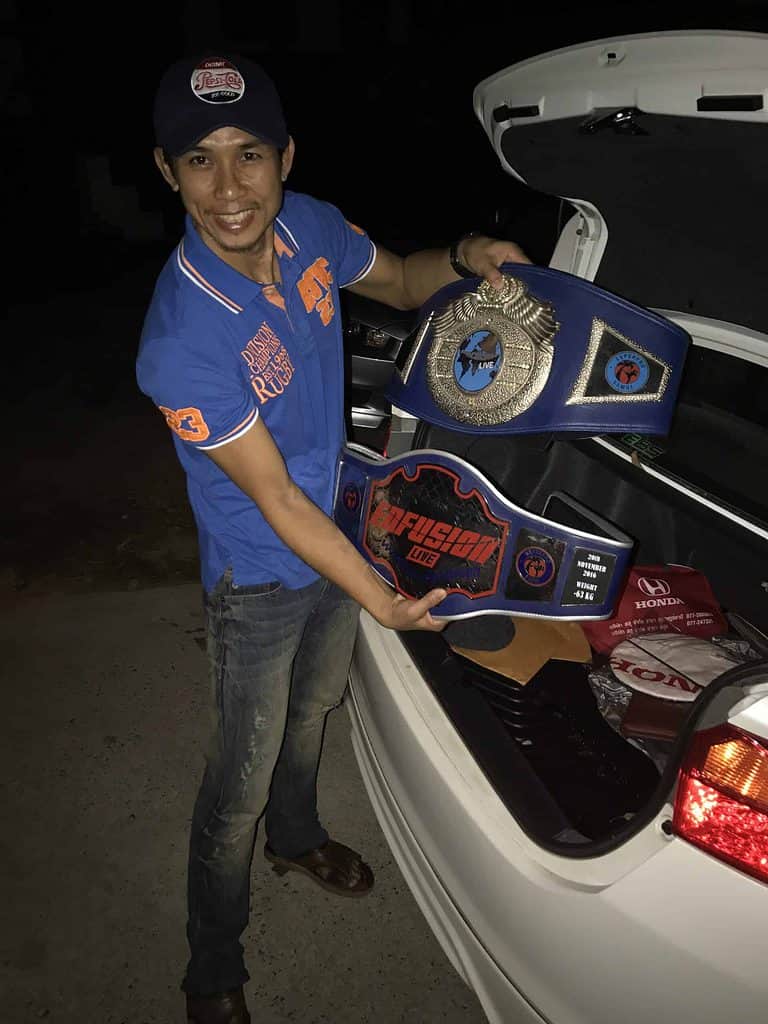
What To Expect From the Training in Thailand
While this depends on the gym and training you compared to out of Thailand, there are still three things I often find very different.
And if you’re new to Muay Thai, don’t worry about not knowing what these things mean yet.
1. There’s a Greater Variety of Techniques and Combos
Due to the lifelong careers of most coaches, they have a bigger reservoir of knowledge. Both when it comes to techniques on their own, but also on how to combine and use them appropriately in different scenarios.
2. There’s a Bigger Focus On Clinching and Sweeps
This is a big part of Muay Thai. Especially when it comes to fighting. Since this isn’t the goal of many Westerners who train as a hobby, naturally this is a less common part of training outside Thailand.
3. Sparring Is More Light and Relaxed (When Done With the Locals)
Many Thais start their careers as kids. So they’ve also learned to play more and consider their long-term health when sparring. Don’t get me wrong, they also know how to spar hard! But they also know when the time is right for it.

The Facilities at Gyms in Thailand
Besides the constant hot and humid weather (with the small exception of the mornings in North Thailand).
The first noticeable difference is that you’re training outside at most gyms. Usually under a simple construction with a roof mainly to cover from the sun and rain.
This will not only provide you with fresh air but also occasional divine winds cooling you down during training.
And sometimes you’ll hear birds singing, or the distinct sound of palm trees swaying.
The vibes are different.
📌 TIP: A lot of gyms also have weights, equipment, and other training facilities. This is a good option to mix up your Muay Thai with some other types of training. I like to lift weights in the morning, and train Muay Thai in the evening.
How To Find the Right Muay Thai Gym in Thailand
There are several things to consider when searching for the right gym.
But don’t worry, I’ll give you all the information you need to find the perfect one for yourself.
Whether you’ve already picked your destination or not.
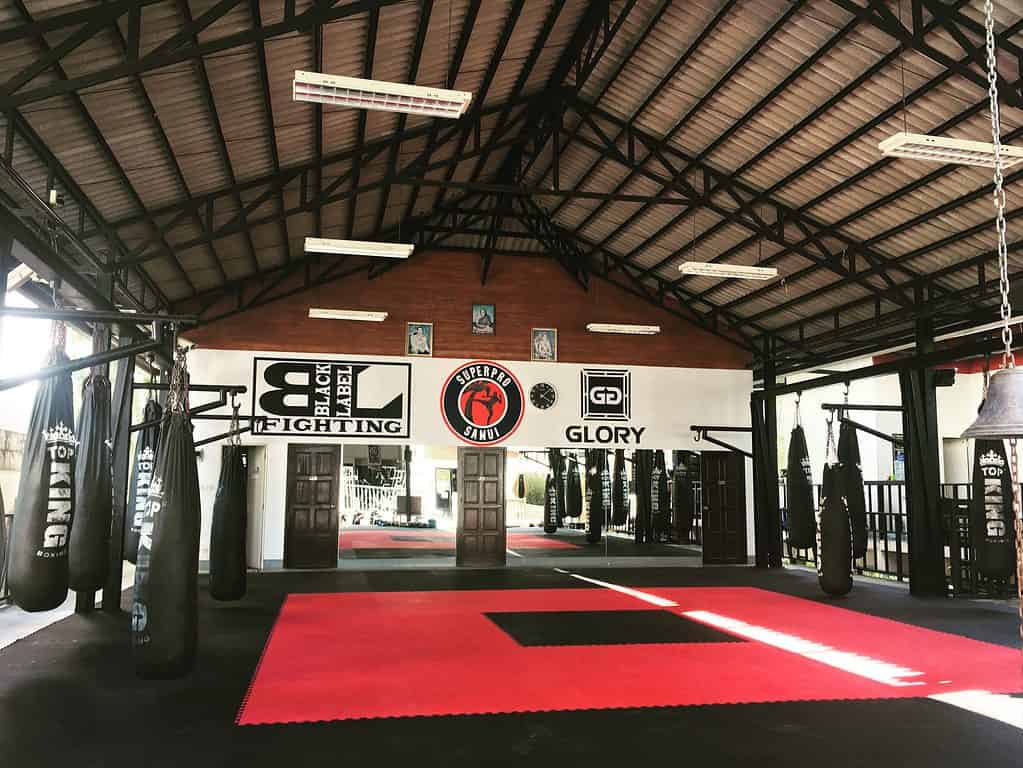
1. Check My Lists of Recommended Muay Thai Gyms
This deserves an article of its own, which I also link to down below.
Here I’ve collected the best Muay Thai gyms in Thailand at each of the most popular destinations.
There’s a high chance I also cover the city you already thought about traveling to, or eventually will.
2. Tripaneer (Formerly Bookmartialarts) 🥊
This website reminds me of what Booking.com would look like if Chuck Norris was the founder.
I’ve used them myself, and I sometimes found that the prices were lower than directly at the gym. You can filter their search results to better fit your needs.
3. Use This Neat Google Search Command for a Specific Destination in Thailand
I’m pretty sure you know how Google works already.
But let me recommend this specific so-called search command to make it a little easier.
Type the following in Google:
koh samui muay thai "thb" OR "baht" (example)
This will give you results from a specific location. In this example from Koh Samui.
I know it might look a bit odd, but by using this search command you’re making sure that either “THB” or “baht” is present on the page Google provides you (Thai Baht – the currency of Thailand).
The reason we want this is that most English-speaking gyms have a website where this information is available.
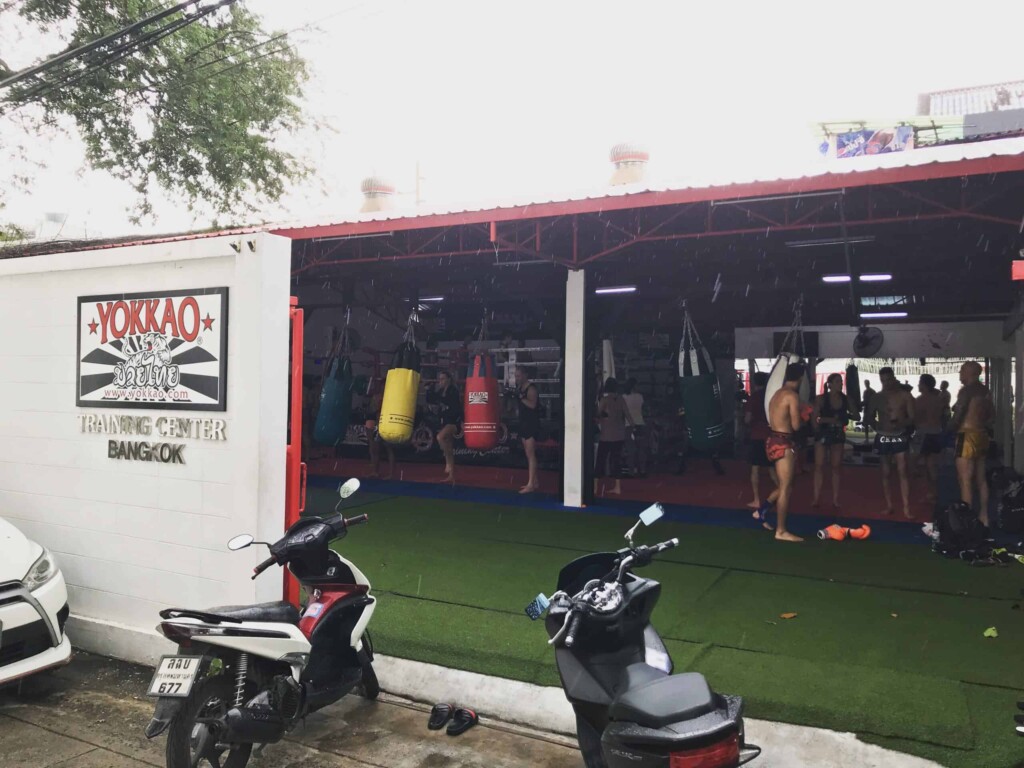
Avoid North Thailand During the Burning Season
Every year the burning season takes place in Northern Thailand, where farmers are burning vegetation to clear their land for next year’s farming.
This releases harmful smoke and particulates into the air, causing air pollution so bad that it can cause problems for even healthy people.
There’s a reason it’s illegal. But due to the lack of alternatives for the farmers, it’s not changing anytime soon. Especially not when the law doesn’t get involved.
On average it takes place for 3 months and usually from January to March. But can stretch itself to 4 months and happen between December to May.
I took the photo down below in Pai in February 2021. Despite the beautiful scenery, you might notice the fog on the horizon.
At the time the air pollution was still relatively mild (yet 4 times above the WHO guideline), but it almost doubled from there in the following month of March.
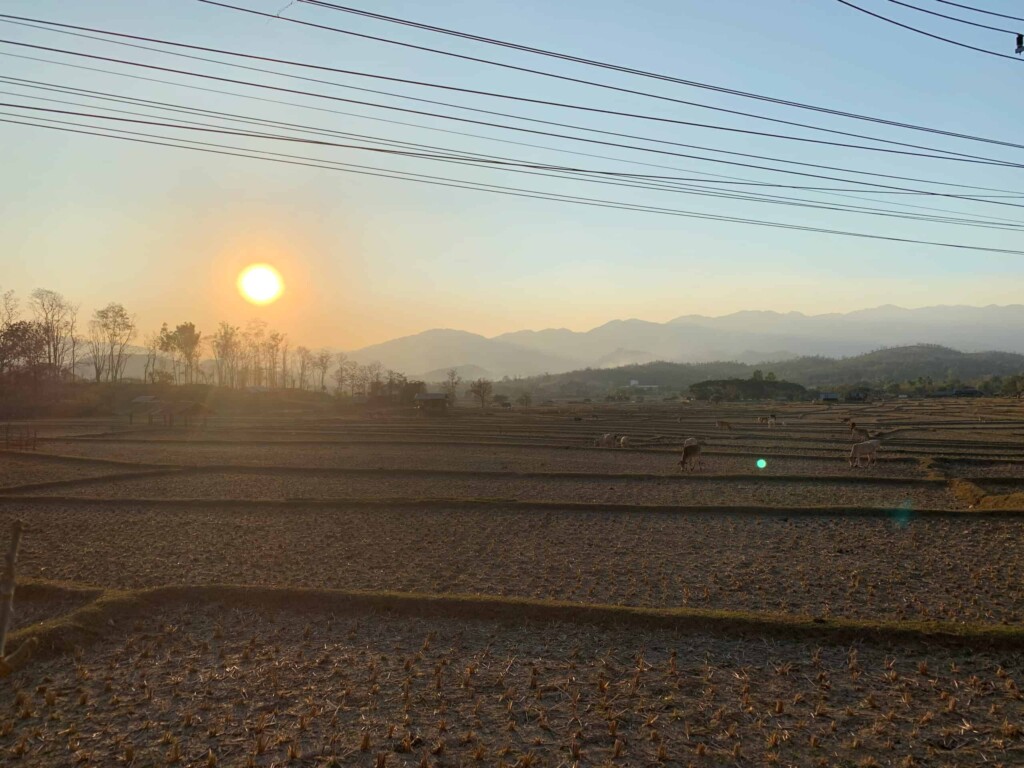
The problem is that if you were to train Muay Thai outside for months during the burning season. And rapidly breathing polluted air deep in your lungs for hours a day during training, it’s something you should think twice about.
It’s a bit counterintuitive to train while your health to a higher or lesser degree is tanking due to air pollution.
I think visiting North Thailand during the milder periods of burning seasons is still fine for a short period, but I wouldn’t stay there for longer periods.
There’s a reason many ex-pats leave their homes and go south every year during Burning Season.
Important Things To Look Out for When Searching for a Gym
It’s not only about the location, facilities, and prices.
What’s more important is to surround yourself with the right people. Both when it comes to coaches and your training partners.
If you’re only planning on training for a short time like a few weeks or so, it would likely be enough to read up on some reviews online.
But if you’re planning on training for a longer period I suggest joining a single class at each of the gyms near your location. This is the best way to get an impression of a place.
Let’s dive a bit deeper into the things you might want to look out for.
1. Get an Impression of the Coaches
If you’re running into a gym where the primary motivation is earning money, you’ll probably sense it after a while.
Some of the things to look out for are whether the coaches are present on what you’re doing, and are taking their time to individually coach you.
If they’re fooling around and paying more attention to each other, it can be a sign of a lack of motivation.
2. Meet Your Training Partners (Other Students)
It’s good to find a place where people seem engaged with each other rather than keeping to themselves.
I’ve both trained at gyms where we felt like family, and in others where people just seemed to show up, do their business, and go home as soon as the class ended.
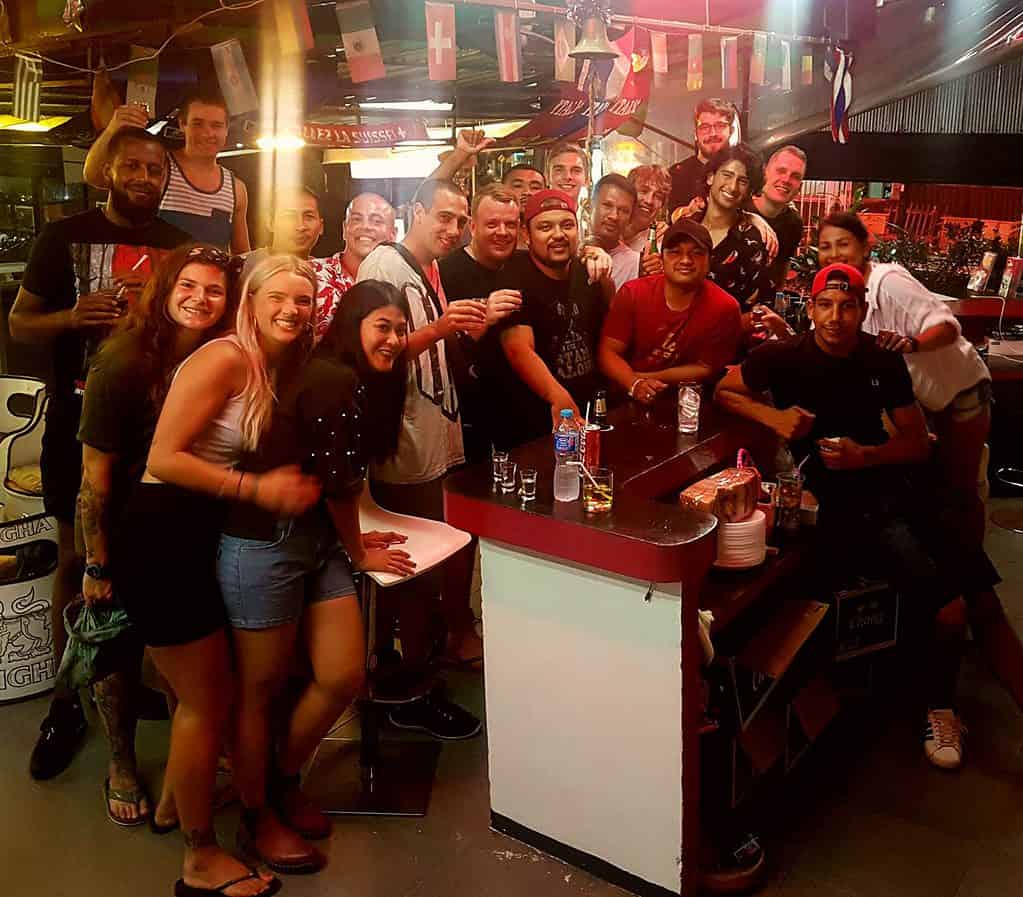
While this part is more out of your control, looking for gyms with on-site accommodation will increase the chances of more engaged training partners.
Because if people are staying there longer and meeting every day, they’re more likely to engage with each other.
Having a great social life during- and outside of training will make everything much more enjoyable. This way you’ll also be more motivated and improve your learning.
3. Make Sure the Gym Can Arrange Fights if You Want One
If you want to have a fight or see one, it can usually be arranged by your coaches at the gym.
Most gyms in Thailand have one or more stadiums nearby. The video down below is from the previous Chaweng Stadium located in Koh Samui.
The guy in the red corner is my friend and training partner Chris. He came to Thailand to enjoy himself and train, but also to have his first Muay Thai Fight.
While Chris is an experienced fighter and European Karate champion (Kyokushin) this was a new challenge for him.
But he did very well, though the judge’s decision ultimately was not in his favor (I’ll let you be the judge).
The Schedule of a Typical Training Session
Now let’s dive more into the details of the actual training.
While the schedule depends on the gym, most places offer 2 daily sessions. One in the morning and one in the evening. Usually 6 days a week with Sunday off.
There are no requirements on how often you need to train. You can pay to train once, or even up to 1 year at a time.
A session is usually between 1,5-2 hours, and consists of one or more of the following:
- Running
- Skipping (and/or jumping tires)
- Dynamic stretching and shadowboxing
- Heavy bag work
- Techniques
- Pad rounds with coaches
- Strength & conditioning exercises
- Static stretching
- Sparring (including clinching)
📌 TIP: Sparring is usually 2 - 3 times a week and optional. Classes often get divided between those who spar and not.
If you find a gym where sparring is inventable and you aren't comfortable about it or just don't want to, speak with the trainers and you'll likely get to do some rounds on the bag (or pads) instead.

How To Find the Best Accommodation Near Any Gym
Many gyms also offer accommodation. While it has its pros such as being close to the gym and your training partners, it can also be much more expensive compared to the alternatives.
I prefer staying off-site but close to the gym. This way I usually get more value for money, but still without being too far away.
But again, it depends on your priorities (we’ll elaborate on that later).
1. Choose an Optimal Location
First things first.
Whether you’ve already chosen your accommodation or not, you don’t want to stay too far away from your gym. Especially on longer stays.
It’s also a good idea to be close to other activities you want to participate in.
And remember that the weather in Thailand can be pretty brutal. Especially during the rainy monsoon seasons.
A trip that seems fine during nice weather, might isn’t when sudden floods are everywhere.
I’ve previously had to cancel agreements due to the weather because it prevented me from going somewhere.
📌 TIP: I prefer staying no more than 10 min from a gym I'm training at.
This alone is equal 20-40 min driving per day if you're training 1-2 times daily.
2. Ensure Access to an Outdoor Area Such as a Balcony
Though this is nice in itself, it’s might not for the reason you think.
The amount of sweat that’s usually involved in training in Thailand also calls for a place to dry your gear and clothes after each training session.
And if you only have access to an indoor area it can get smelly quickly. Such as a hostel dorm.
Alternatively, you can arrange to store it at your gym. Just be careful it’s not getting mixed up with theirs or anyone else’s equipment.
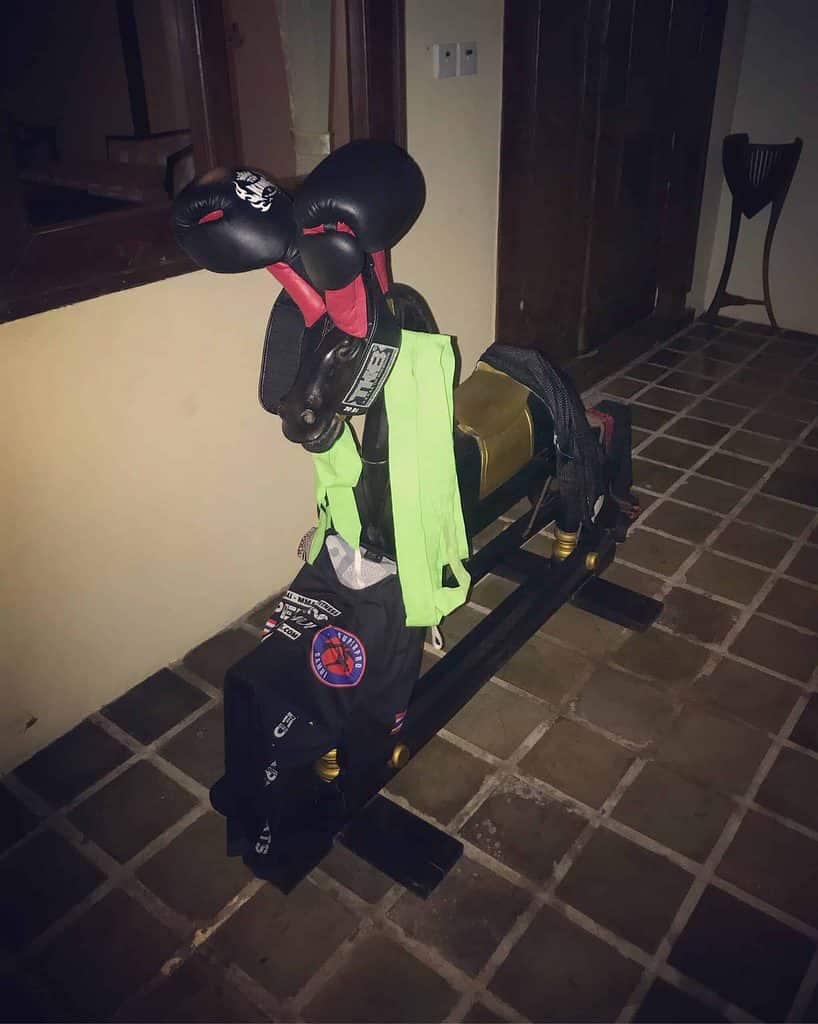
3. Where to Book Your Accommodation for the Best Price
When you’ve found your gym, the only thing you need now is to find the best nest to recover.
And before booking accommodation with your gym consider all your options. As said, you may find a comparable place for less or a nicer one for the same price elsewhere.
And though there are hundreds of websites to check for accommodation, you only really need two to cover the majority of your options.
1. 🏨 Booking.com
Chances are you already know this website. And for a good reason.
They offer a vast selection of accommodations at competitive prices, with the bonus of booking now and paying later, and free cancellation for many properties. This makes it the ultimate choice for those seeking flexibility.
These things combined likely make Booking.com the best option for shorter stays ✅
2. 🏡 Vrbo.com
The best thing about Vrbo is that you’re often renting from locals.
This means you’ll often find more unique accommodations for a low price. And if you’re staying for 4 weeks or more, many hosts offer a discount of at least 15%.
And these things combined likely make Vrbo the best option for longer stays ✅
📌 TIP: If you stay longer than 30 days, the'res also a third option unknown to many. The Facebook marketplace is quite popular in Thailand, also when it comes to finding accommodation for rent. You can access the marketplace here on Facebook. Just filter to your destination in Thailand and you're good to go. This is where you usually find the lowest prices since you're renting directly from local people or businesses without any middleman. Though be aware of the cons of this option. It takes a bit more time to contact each host. Availability isn't guaranteed. And by cutting out the trusted websites mentioned before, the only thing you can rely on is the word of the host. If you decide to go with this option, I recommend you check out a place in person first. And never pay anything before the day you move in.
What To Pack From Home
- Boxing Gloves
- Wraps
- Skipping rope
- Shin pads
- Mouthguard
- Groin protector
- MC-helmet (with international license)*
*Since your primary way of transport likely will be on a motorbike, it’s a good idea to bring a high-quality helmet.
The helmets you’ll find in Thailand (especially from rental places), won’t do any good in case of an accident.
And the selection there can also be quite limited. Especially in smaller cities. Or if you just have a big head like me.
📌 TIP: If you're considering getting some new Muay Thai gear, I suggest buying it once you arrive in Thailand (where it's made and exported from). As mentioned earlier, the prices are usually 50-70% lower compared to western prices. And then you'll also have more space in your luggage on your way there, which can be used for items you'll use and not return, such as supplements, personal hygiene, etc.
How To Stay Safe and Take Care of Your Health
This chapter isn’t only about avoiding pain or injuries. It’s all about having your best time and training at your fullest potential.
And imagine having to cancel midway while you’re having the most fun. Especially if it could have been avoided by following these simple tips I’m about to share.
1. Travel Insurance Covering Muay Thai Training
Travel insurance is a must-have on its own.
But it’s crucial to find one that covers boxing/martial arts training too. Many insurances don’t.
That’s one of the many reasons I recommend Genki travel insurance 🏥
📌 TIP: Especially if you’re sparring. I’ve had moments where I thought my jaw was a minute away from needing an expensive visit to the hospital.
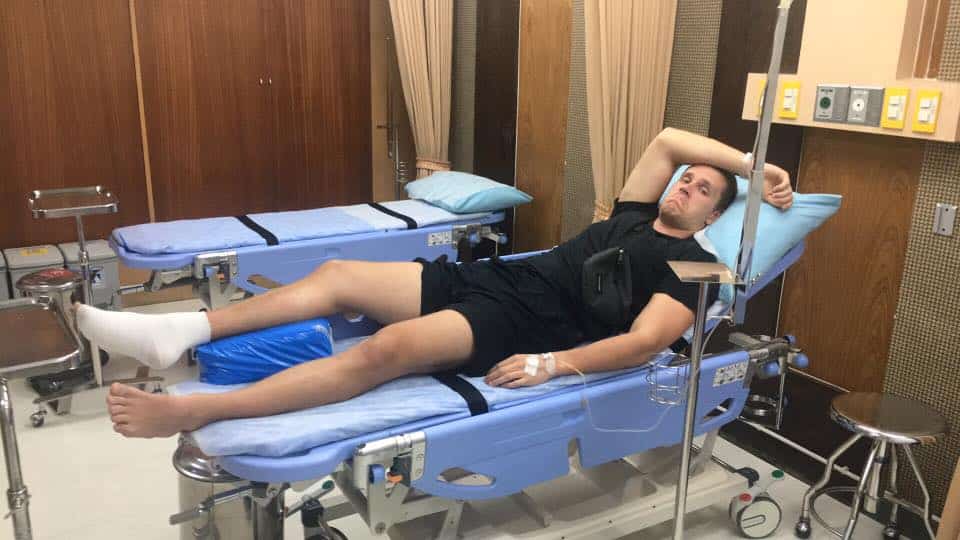
⚠️ Important Message: Driving Motorbikes in Thailand
Let me quickly introduce you to one of the biggest misconceptions among travelers in Thailand.
If you don’t have a motorbike license you’re likely not covered by your insurance in case of an accident. And no, your normal driver’s license isn’t enough.
There are two main reasons people are confused by this:
- You’re likely not going to get asked about a license when you’re renting a motorbike. Even though it’s technically illegal to drive without one
- In many countries, you can drive a scooter (49 ccs) with your regular driver’s license. But in Thailand, all the motorbikes are 110 ccs or more making it invalid.
And with Thailand having the 2. most dangerous roads in the world, it is something you should consider.
From my long time spent in Thailand, I’ve seen a handful of accidents. I’ll spare you the details, but I’ve seen some left me in doubt whether the person survived or not.
And one of my good friends almost died at the age of 32 after getting hit by a truck. Unfortunately, he didn’t have a license or wear a helmet, resulting in an uncovered medical bill of over $70,000.
So consider investing in a motorbike license before coming to Thailand. Especially if you’re planning on staying for a longer period, whether it’s on single or multiple trips in the future.
It’s also useful to have if you’re planning on visiting some of the neighboring countries such as Indonesia, Vietnam, and Cambodia.
📌 TIP: In case you already have a motorbike license or are gonna get one, remember to get an international copy of your driver's license too (IDP).
2. Hydration (Electrolytes AKA Salts N’ Minerals)
Make sure you’re hydrated.
Usually, the more you sweat, the more you drink. And the more you drink, the more you deplete your body of salt and minerals.
Luckily there’s a very enjoyable and cheap way to fix that.
Visit a 7-Eleven or Family Mart in Thailand. And find some packages of either “Royal-De” or “Tonk-KKK”.
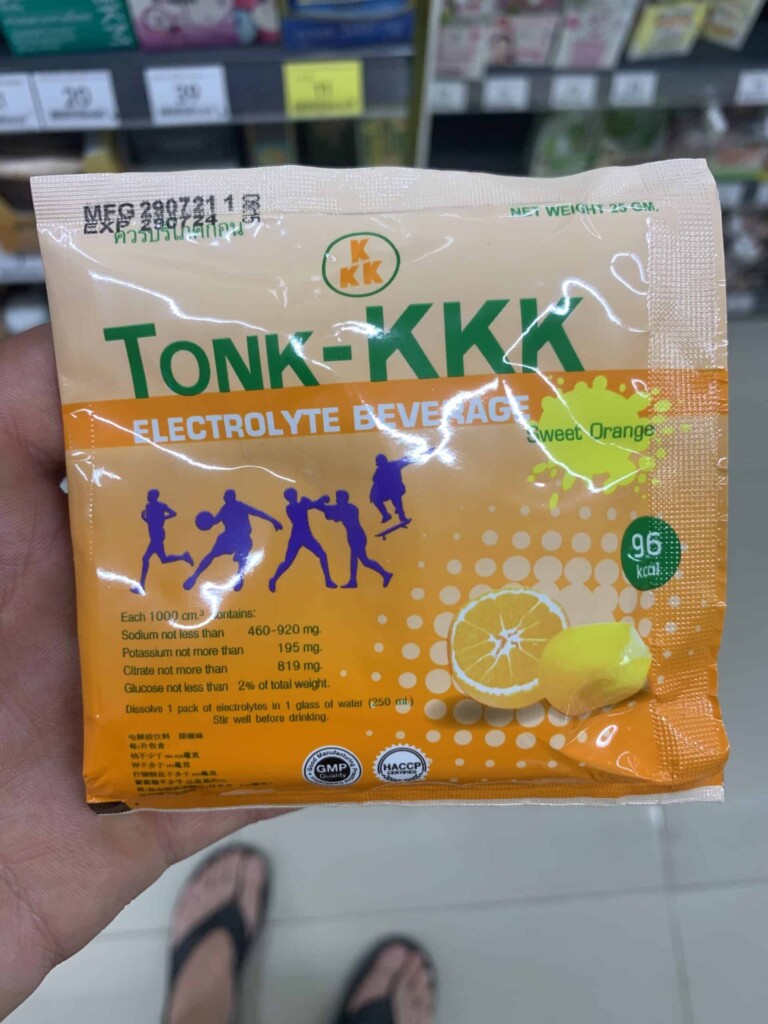
I recommend “Tonk-KKK”. They taste amazing (orange).
One bag is 5 THB if I remember right ($0.15). I usually mix 2 bags with a bottle of water and drink a bit before and during training.
3. Warm-Up
I know this sounds trivial, and you might think I’m a baboon to mention this. But hear me out.
Training isn’t without risk if you haven’t prepared your body for it. Especially knees when kicking.
I once threw a low kick on the most intriguing red hand-made leather bag from Fairtex without warming up.
Just to hear a pop in my right knee. Followed by regret while dipped in ignorance.
That meant I couldn’t kick pads for 3 months, and the heavy bag for 6 months. Imagine that happening during your trip.
Be smart and think long-term.
4. Work Smart – Not Hard
I’ve met quite a few people who overdo their training and jump straight into training twice a day. They don’t want to waste time. And I understand. But it’s counterproductive if you’re not fit for it.
It’s might possible for a short amount of time. But if you’re there for more than a few weeks, I recommend starting lighter.
This is not only to avoid physical burnout or injuries but also to drain yourself mentally.
I believe the key to doing something challenging is to have fun. Get a positive relationship with whatever it is. And then push yourself in moderation.
However, I do recommend pushing yourself beyond your own beliefs in some cases. But that’s for another chapter…
5. Boxing Oil
Also known as Tiger balm. Buying this isn’t necessary at all, but I included it anyway. Why? Because it’s awesome. It warms up your muscles and feels good.
If you’re a creature of comfort, boxing oil gives you an awesome sense of control over sore muscles. And it smells amazing if you ask me.
You can buy it at most pharmacies and various shops once you get to Thailand.
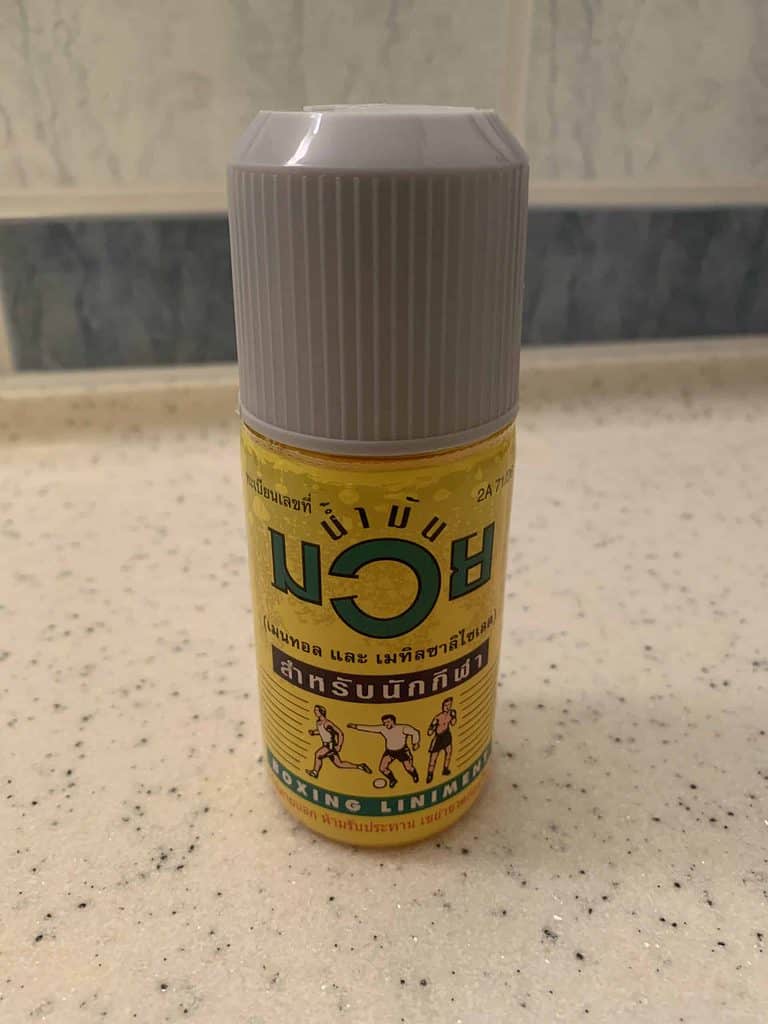
6. ⚠️ Cleaning Blisters and Wounds
Forget about what you do back home.
Underestimating the foreign bacteria in Asia can cost you your vacation. And in the worst case your life. Blood poisoning isn’t to be messed around with.
I’ve met several travelers with staph infections who went to regular treatment and/or took antibiotics for it. And not even all these cases came from wounds.
So while you’re already at 7-Eleven or Family Mart shopping for electrolytes. I suggest buying a yellow bottle of “Betadine” iodine and some cotton swabs. It’s cheap.
It’s what they prefer to use at hospitals in Asia too. I’ve been treated with it both in Thailand and Cambodia.
Once you’ve cleaned and dried your blisters or wounds with soap and water. Then add a few drops of Betadine or use a cotton swab to apply it and let it dry.
I usually put some plaster and/or tape on to cover it too.
📌 TIP: It's normal to get blisters when training in Thailand. It's normally caused by a mix of increased intensity, humidity, and sweat on the mats.
How I Caught a Potential Life-threatening Infection From a Blister (My Story)
It almost ended very badly for me because I didn’t understand the severity of an infected blister under my foot I got from training.
First I popped the blister with a burned needle, without cleaning it. I thought it was safe at the time. But only after a few hours did the infection set in. And I started to feel feverish and like my skin was burning all over my body.
That night my foot and leg swelled and made it almost impossible for me to walk the next day.
I was stupid enough to wait for a whole other day to visit the hospital since I thought it would get better.
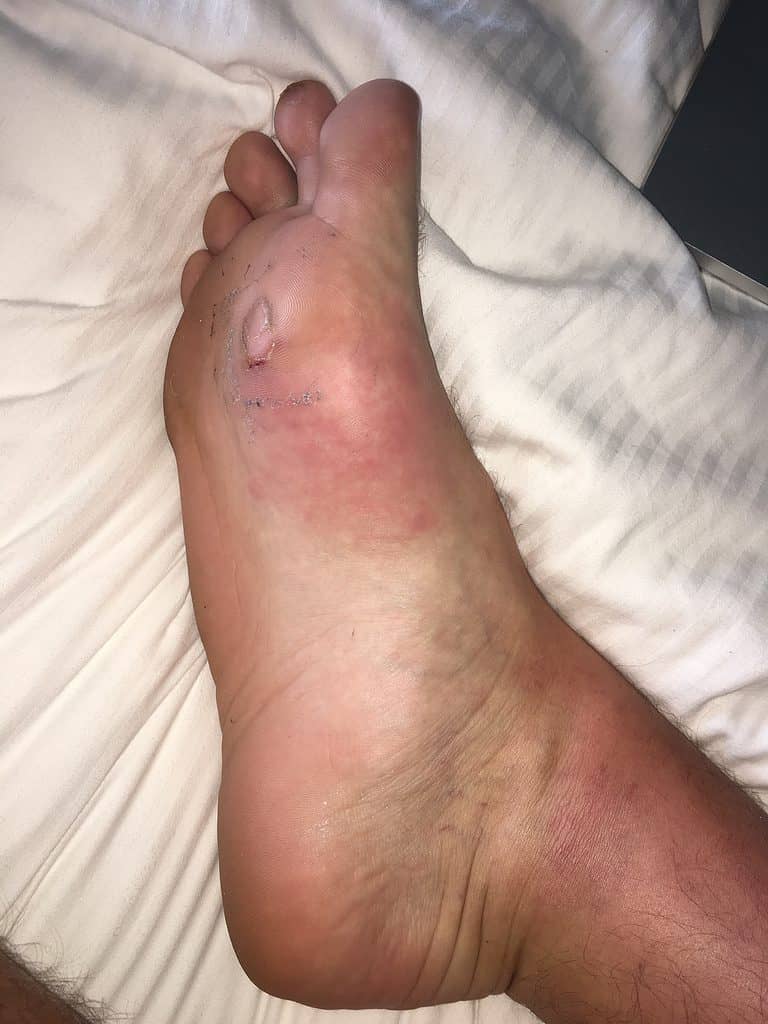
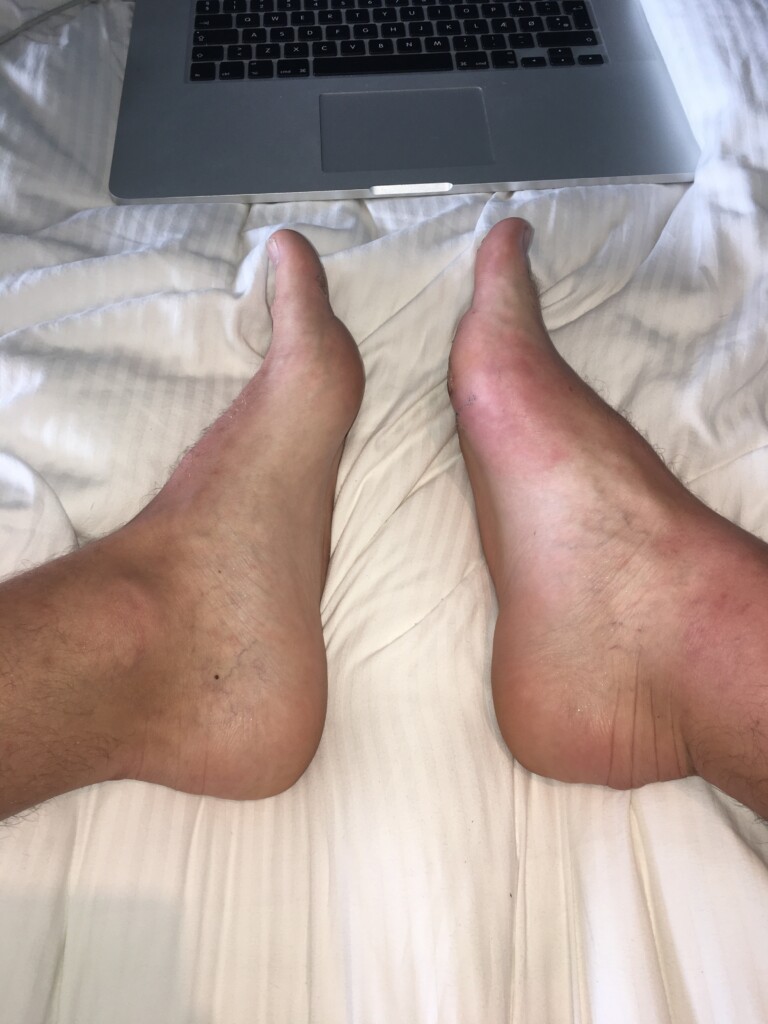
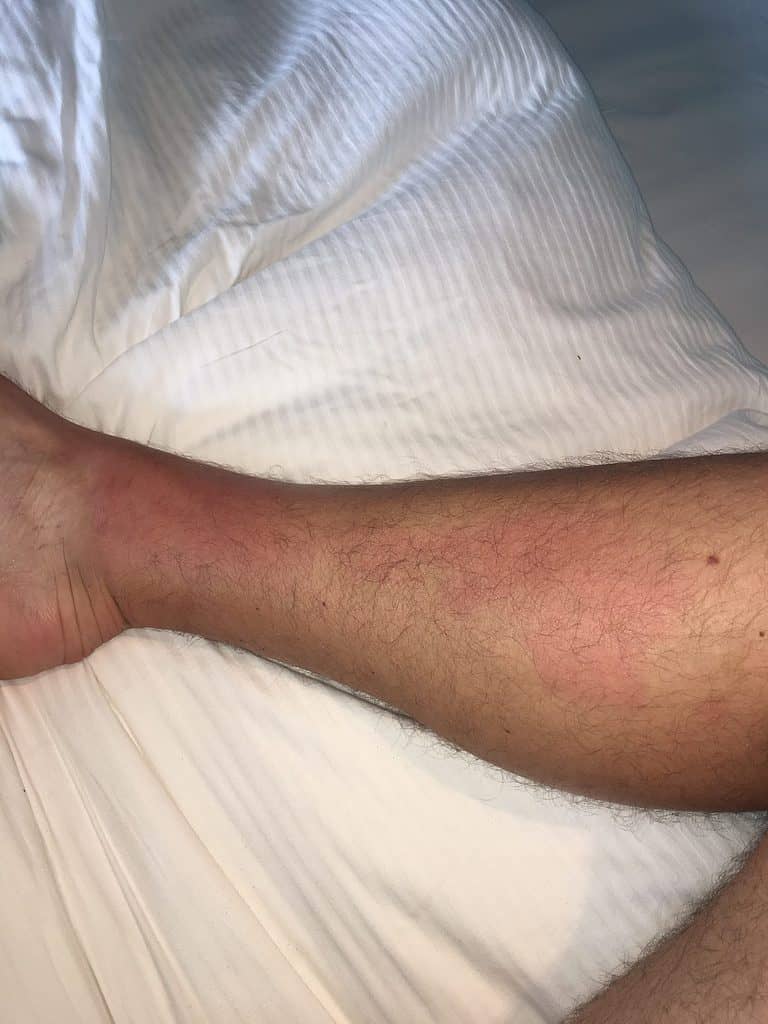
The bacteria were going for the rest of me. But luckily they didn’t get that far.
If it wasn’t for a friend of mine, who told me to visit the hospital instantly, I honestly don’t know if I would be here today. She might have saved my life.
To keep a long story short. I ended up staying 2 days at the hospital. For a total price of $2,500.
My daily activities consisted of getting injected with antibiotics every 6 hours non-stop through a drop. To the point where my veins near the drop started to hurt.
Luckily I’m here to share my story with you, so you don’t have to make the same mistake.
What to Consider if You’re Serious About Training
In case you have a clear goal in mind and wish to train Muay Thai for more than the experience itself, there are some things you should consider.
In other words; you’re not there to dance, but to transform your legs into a baseball-bat hybrid!
This chapter applies to you if you’re either:
- A beginner and the primary goal of your stay is to learn Muay Thai
- Experienced and wants to take your skills to the next level
- Want to fight in Thailand
- Are very serious about losing weight
- Someone who wants to train more than once per day.
All these scenarios have something in common.
It would benefit you by optimizing the environment of your stay. To make sure it serves the optimal defaults for reaching your goal(s).
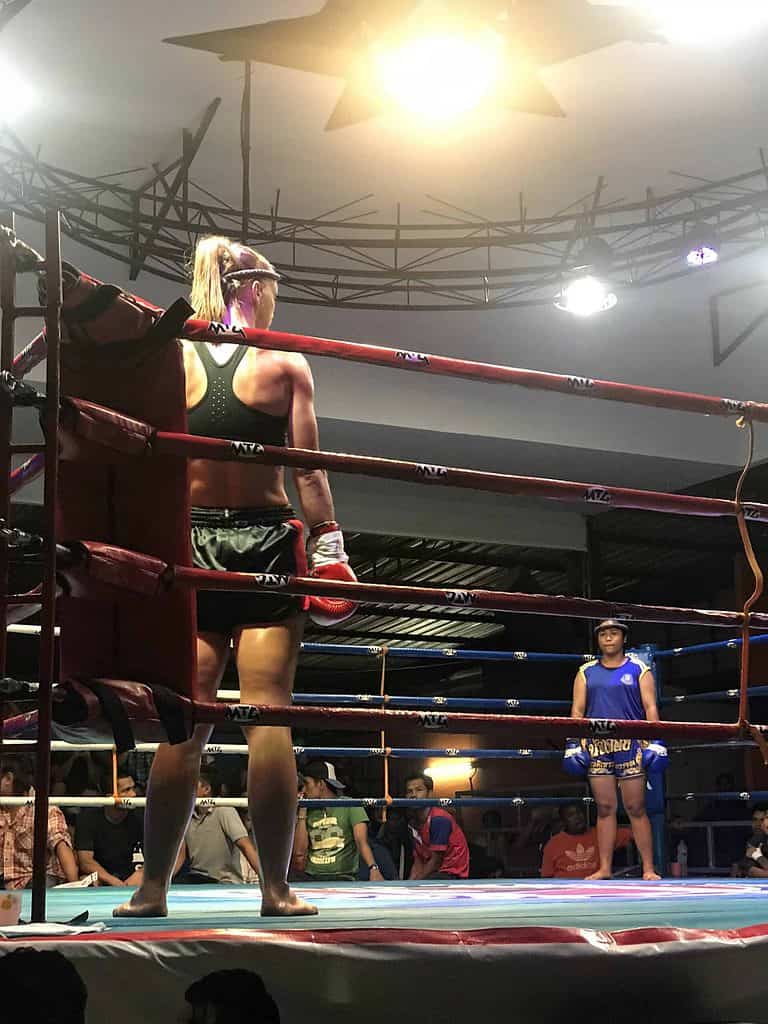
That also means decreasing the risk of distractions and temptations. And make it easier to make the right choices so you can save your willpower for training.
1. Pick a Gym With On-Site Accommodation and Stay There
This will not only shorten your distance to the training sessions. But also increases the chance of an optimal social environment with other equally ambitious teammates.
2. Choose Your Location Wisely
If you’re located in the center of a party island. Then chances are you’d sooner or later hear the amazing animals call out your name. You know, the lovely Chang’s, Singha’s, Leo’s, and Tiger’s (beers).
While I’m all in for partying, if your goal is to dedicate yourself 100% to training, it’s might worth considering.
3. Bring Supplements (Including Electrolytes)
Consider packing supplements with you from home.
If your space is tidy, or you don’t want to carry it all around. Then check out Lazada (the Amazon of Thailand I mentioned earlier), and get your goods delivered to you in Thailand.
I’ve ordered through them several times before and it works.
4. Don’t Forget That Rest Is Also Training
Most gyms are closed on Sundays making it a collective rest day. And they are there for a reason.
Allow yourself to experience all the other things Thailand has to offer and rest your mind and body with a break from training.
I’ve been struggling with this from time to time. But pushing on when you should relax quickly becomes counterproductive.
I’m sure you know your body and mind better than I do, but I still think it’s important to mention.
Whether You Should Prepare Yourself Physically or Not
It depends on how long you’re planning on training.
If you’re gonna train for a few weeks, it makes sense to prepare yourself by doing some cardio beforehand.
The reason is that you have little time to get into shape, and therefore increasing the risk of your shape limits the yield you can get from training.
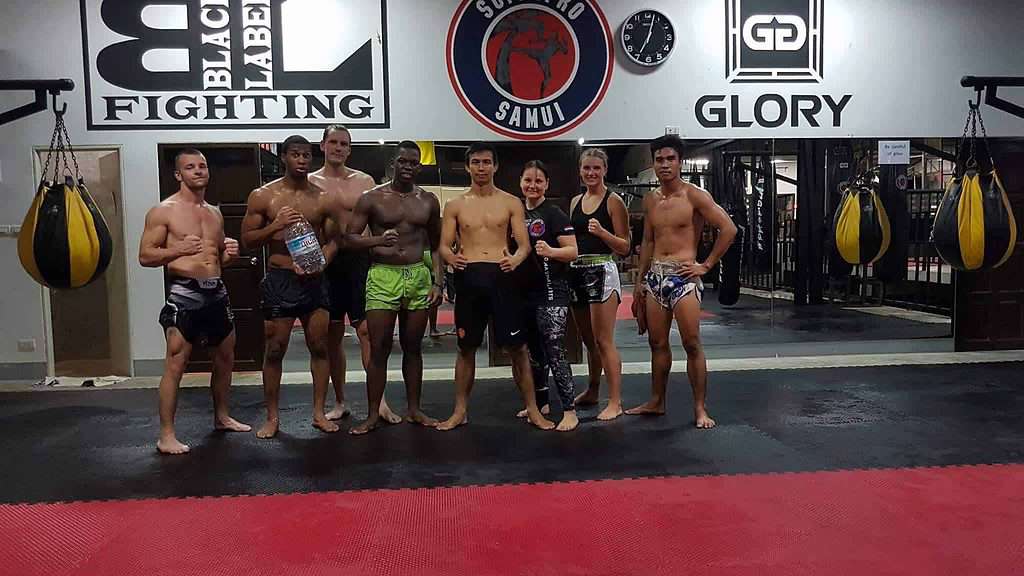
Where if you in comparison can train for a month or longer, you have enough time to get into shape once you get there.
Training sessions in Thailand can be brutal and last up to 2 hours or more at a time. And the new how the environment can potentially empty your gas tank quicker until you get acclimated.
If You Want To Stay in Thailand for More Than 90 Days (And up to 1 Year)
The amount of time you’re allowed to stay in the kingdom depends on your visa.
You can stay between 30-60 days on a tourist visa. These can both be extended by 30 days at the nearest immigration office resulting in 60-90 days in total.
If you want to get a 60 days tourist visa you’ll need to obtain this before traveling to Thailand. The 30-day visa you can get on arrival.
The rules can differ a bit depending on the country you’re from, but this applies to most Western countries such as the US, Canada, the UK, and Australia.
If you’re looking to stay for more than 90 days and up to a year things change a bit.
And this is where you’ll need a Muay Thai visa, also known as a Non-immigrant Education Visa (ED).
Next Chapter: How Much Does It Cost To Train Muay Thai in Thailand?
Let’s get down to business (as they say).
For this, I’ve made a dedicated article where I break down all the costs of training in Thailand. Whether you’re planning to train once or up to a year.
I also share my budget and reveal exactly how much I spend on my trips.
But most importantly I reveal the best secrets and hacks on how to save money while training in Thailand, so you can get the most bang for your buck:


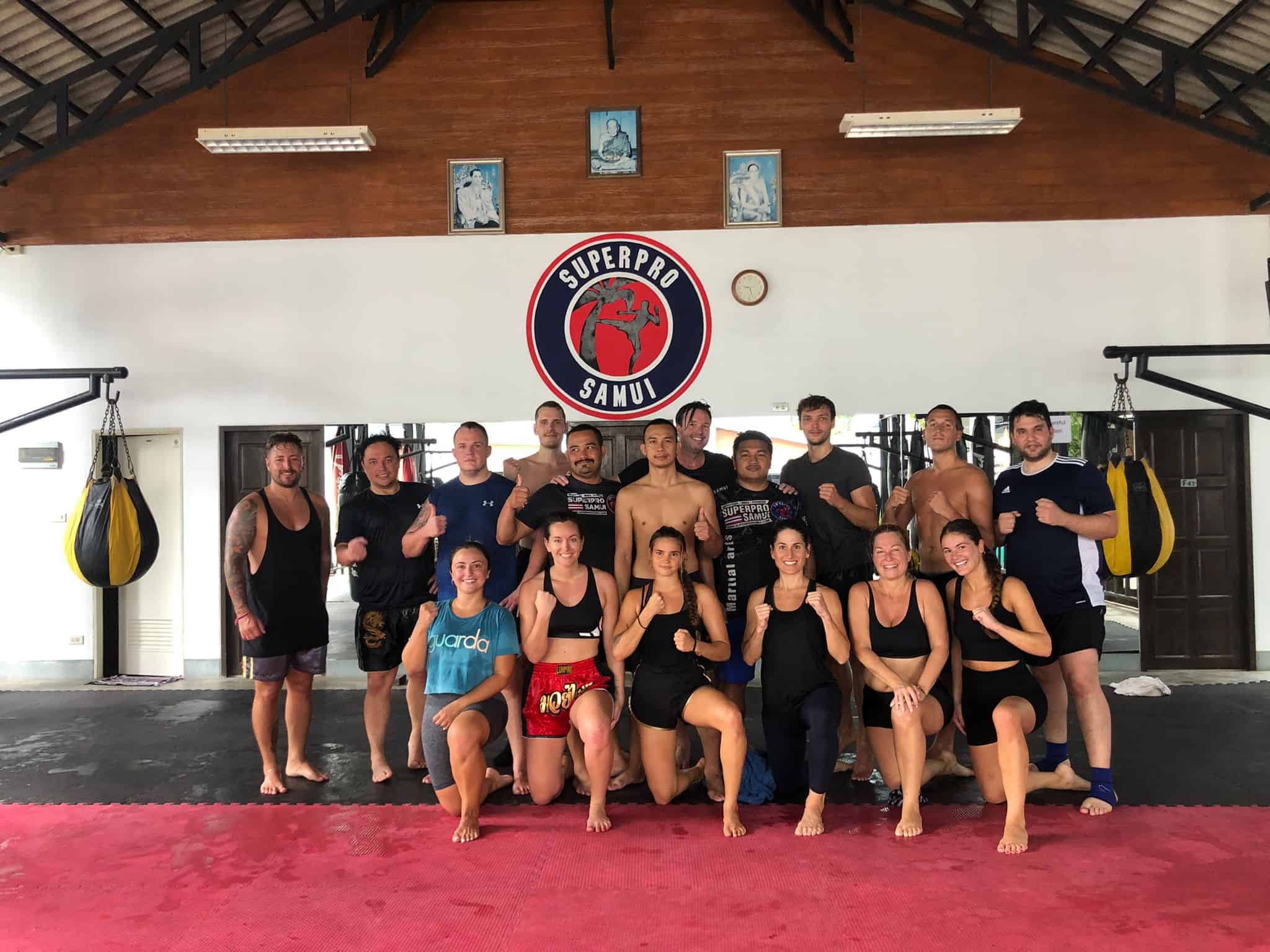
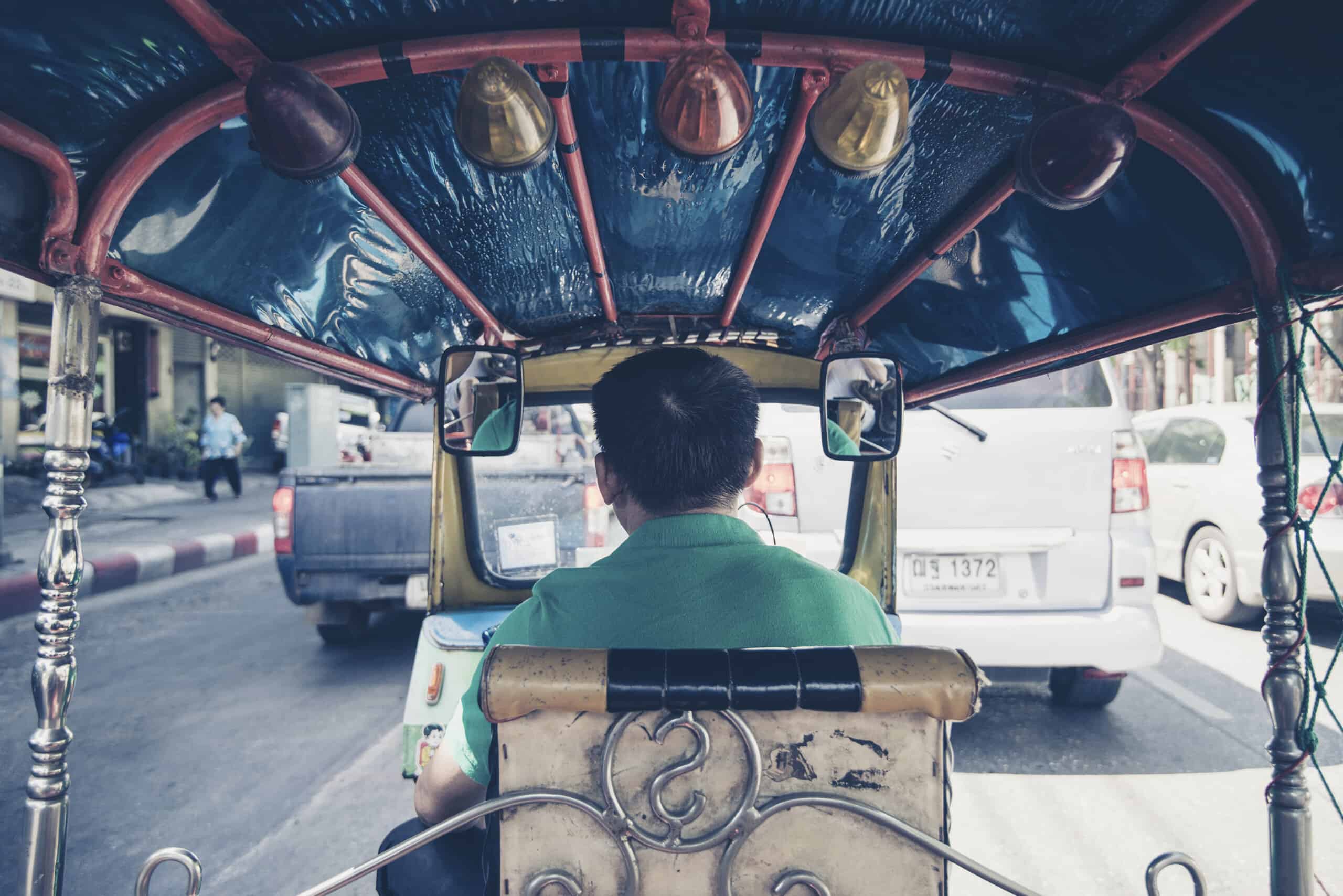
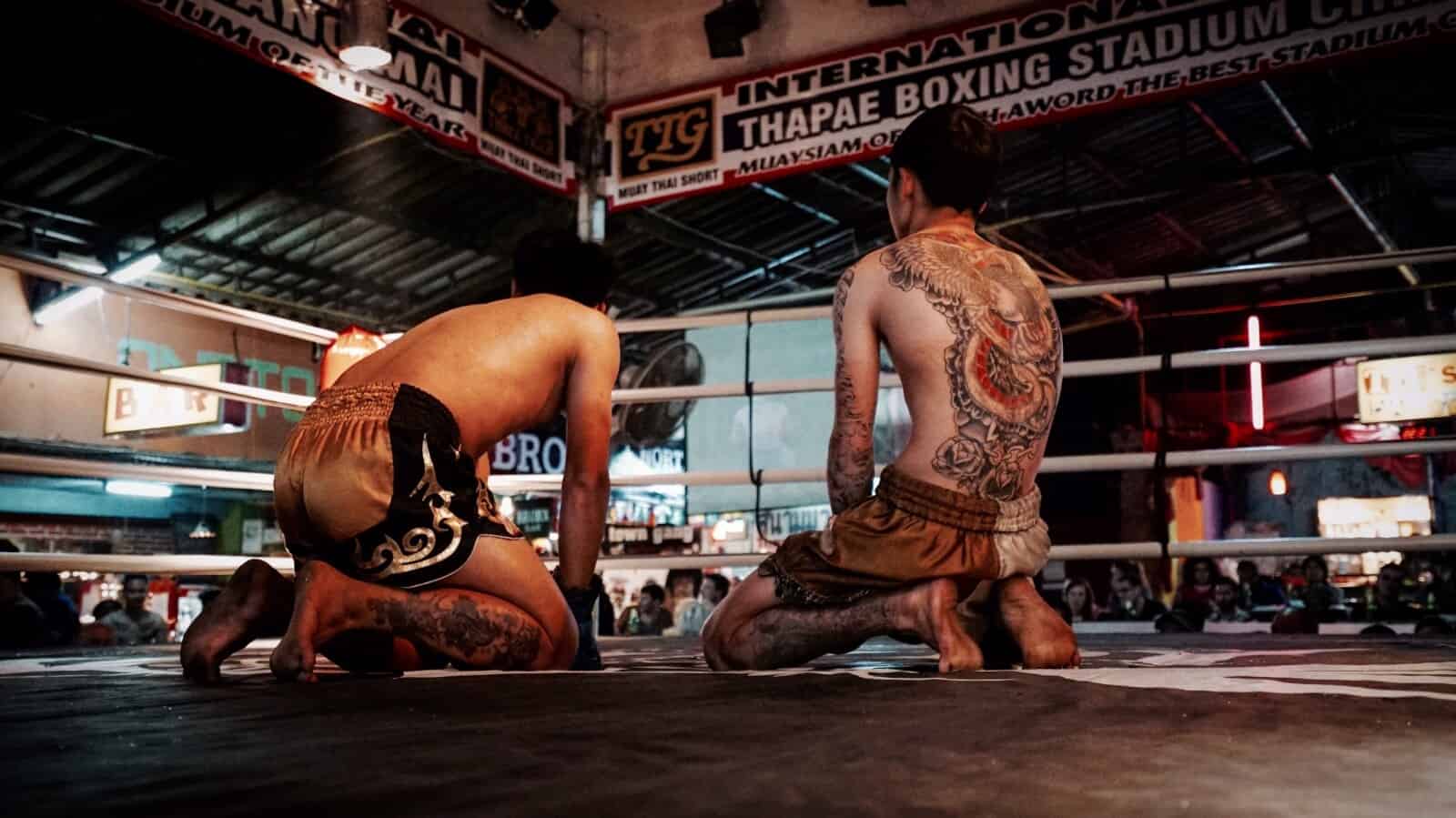

Leave a reply